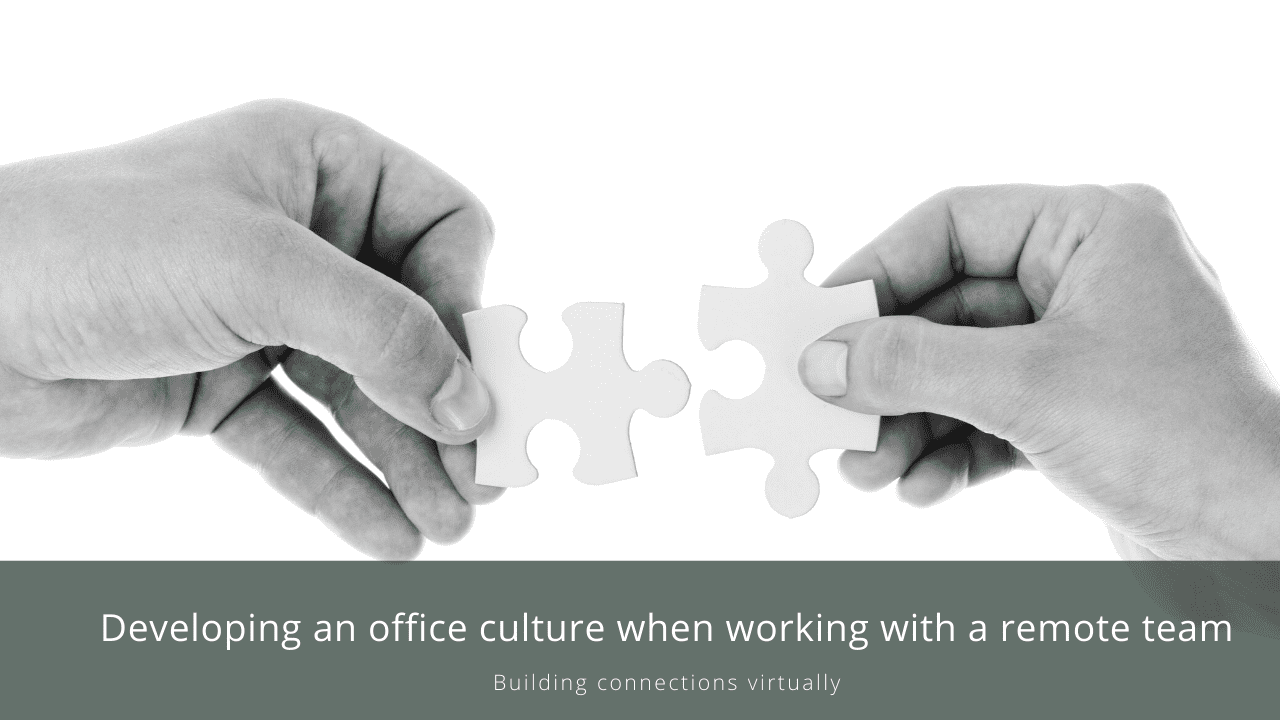Remote working has gained a lot of popularity and is fast becoming a way to attract talent to successful companies. Employees who are able to work remotely report being happier and more productive compared to their office-based counterparts. For organizations with a remote team, it also has the added benefit of being extremely cost-effective and can save around $20,000 on facility costs per employee a year.
We elaborate on how technologies are disrupting marketing and PR.
However, the lack of face-to-face communication can make it hard to build a company culture and remote working can leave people feeling disconnected. Reportedly, up to 70% of remote workers feel left out of the workplace.
Creating an office culture with a remote team has its challenges, but a few simple practices can be implemented to help develop a long term culture.
Communication

Communication is essential for creating a strong working environment. Having clear, concise and inspirational documentation establishing the company’s vision and mission is crucial. This helps ingrain the company ethos in both existing and new members of staff.
Netflix distributes its ‘Culture Deck’ internally and externally to give everyone an idea of the principles that define the company. In doing so, they have made their expectations of all workers very clear which helps drive people towards commonality. Effective communication helps companies set and maintain their values.
Creating rituals and traditions
Rituals and traditions help form the bedrock on which values can grow. Having remote workers introduce themselves with fun “get-to-know-you” questions can help break the ice. Creating rituals adds a sense of continuity to a team and allows management to personalize their approach.
Reaching out to remote workers on special occasions and involving the whole team lets employees know that they are part of an organization with their interests at heart.
Meetings

Face-to-face meetings are a rarity among teams who work remotely. However, it is vital to schedule frequent meetings with remote workers. Time can be allocated for shorter daily team “standups” which usually run for less than ten minutes. These improve the accessibility of various team members. Or, longer catch-ups can be scheduled weekly or monthly, which give remote workers a chance to catch up with each other in detail.
Meetings can also be held using videoconferencing to provide a personal feel and put names to faces.
One-on-one meetings let remote workers know that a manager is present and it allows them to come forward with any issues. These meetings help to break down barriers and build trust. It is also an opportunity for management to identify and focus on anyone who may be feeling isolated.
Creating a virtual watercooler

In the office, the water cooler is the place where everyone gathers to chat. Virtual areas like this can be created using tools such as Slack or community message boards.
It is important that informal channels are set up to help promote the exchange of dialogue and allow staff to connect. Ideas such as Secret Santa where webcams are used for the reveal can also be used to create an office culture and help colleagues bond. Some companies use online gaming platforms during lunchtime to promote teamwork.
Creating these spaces allows remote workers to develop a community and promotes a shared vision. Overall, it’s important for the long term success of company culture.
Want to know how experts are made and nor born? Found out strategies for the busy entrepreneur here.
Company retreats
Yearly retreats are a fantastic way for a remote team to meet each other and bond in person. The quality time spent on retreats can help build deep connections between staff. They’re an opportunity to reaffirm company values which helps create a consistent narrative.
The money saved on facilities spending can be used to splash out and treat remote workers which gives the team something to look forward to every year. For companies without the budget for a retreat, travel allowances can be provided to encourage employees to visit their co-workers.
Remote teams are expected to increase in abundance as technology improves. Companies need to adapt to a changing workforce or remote workers will become detached and unhappy.

Thankfully, simple and effective methods can be implemented to help mitigate the issues faced by remote workers. Whatever the strategy, they all require a consistent effort from those involved. With effective management, remote workers will continue to be happier and more productive than their office-based colleagues.
To find out more about how we manage work remotely at SYNC PR, just send us a message at [email protected] and we’ll arrange a session to share more.
This article has been updated on 10 June 2020

